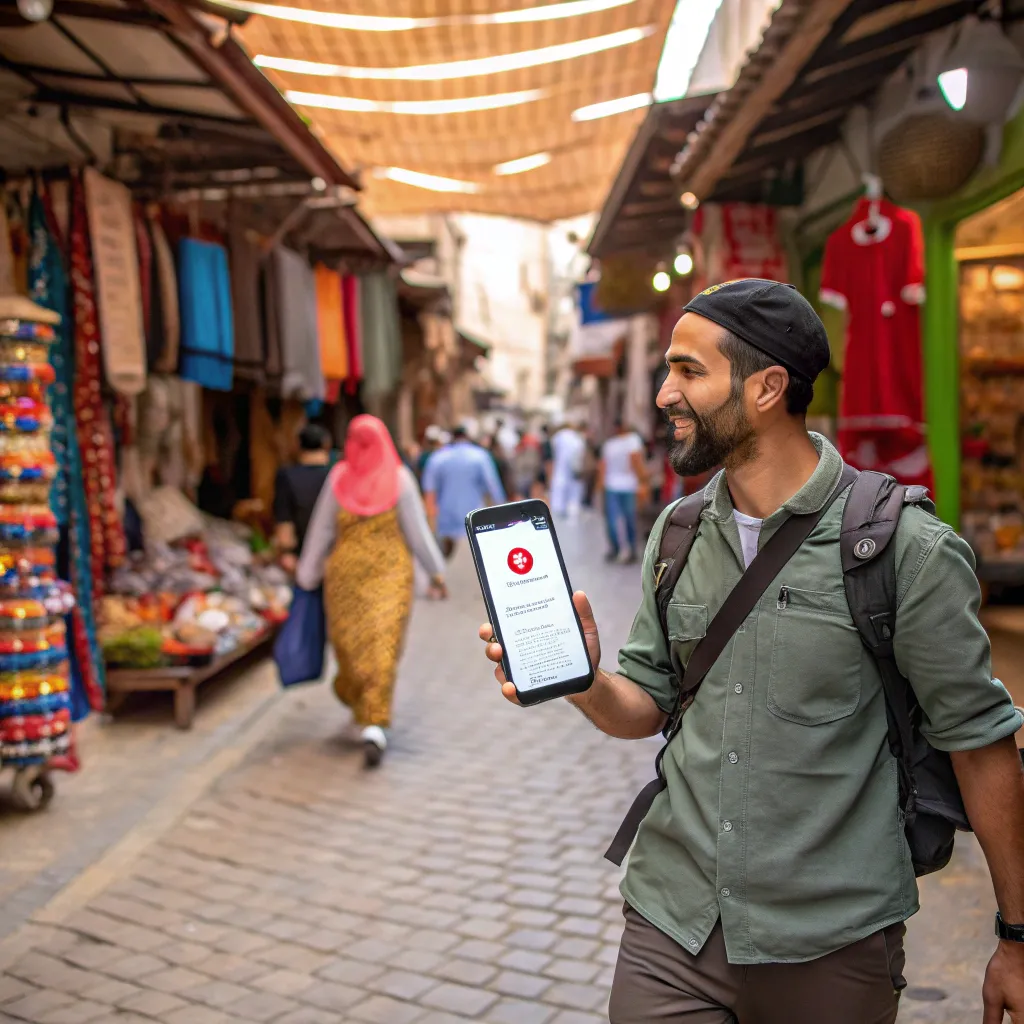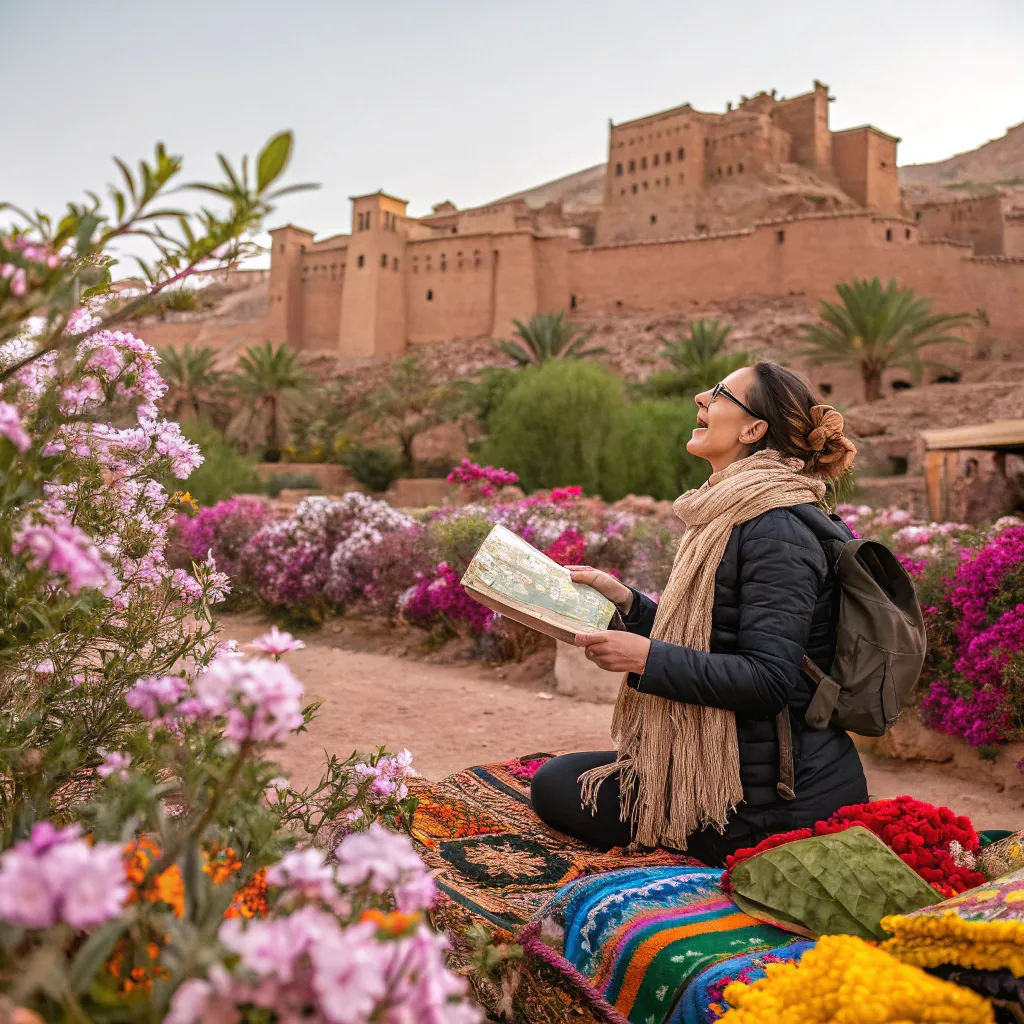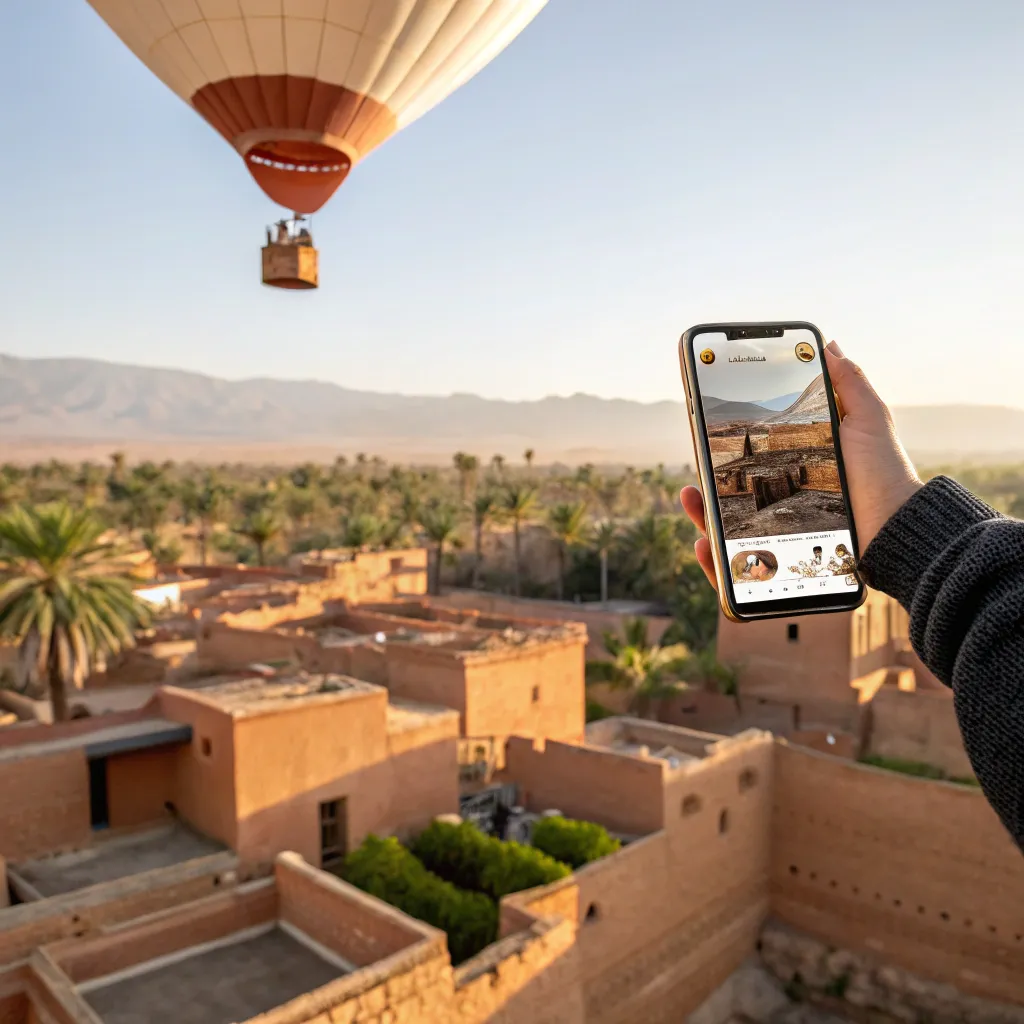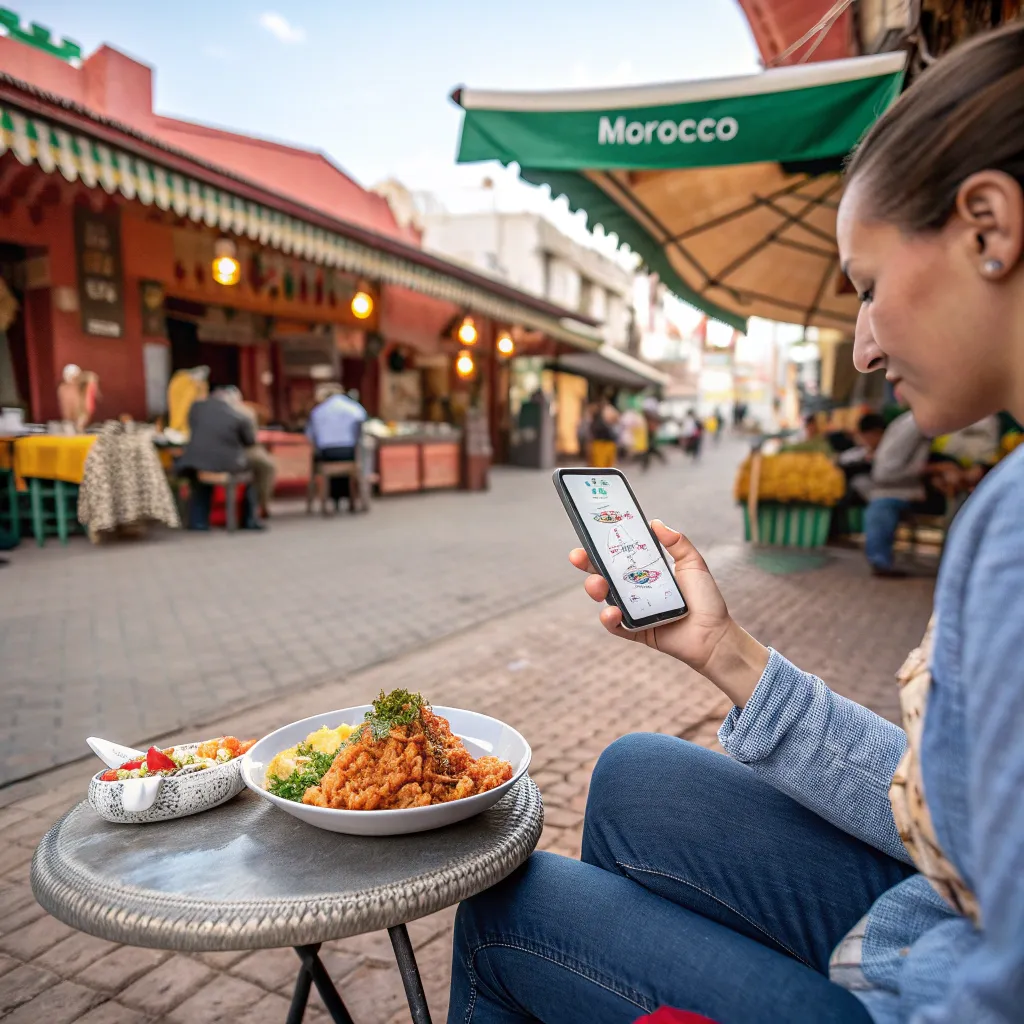Simless
February 13, 2025
Moroccan Arts and Crafts: A Journey Through a Timeless Heritage (Stay Connected and Share the Beauty!)
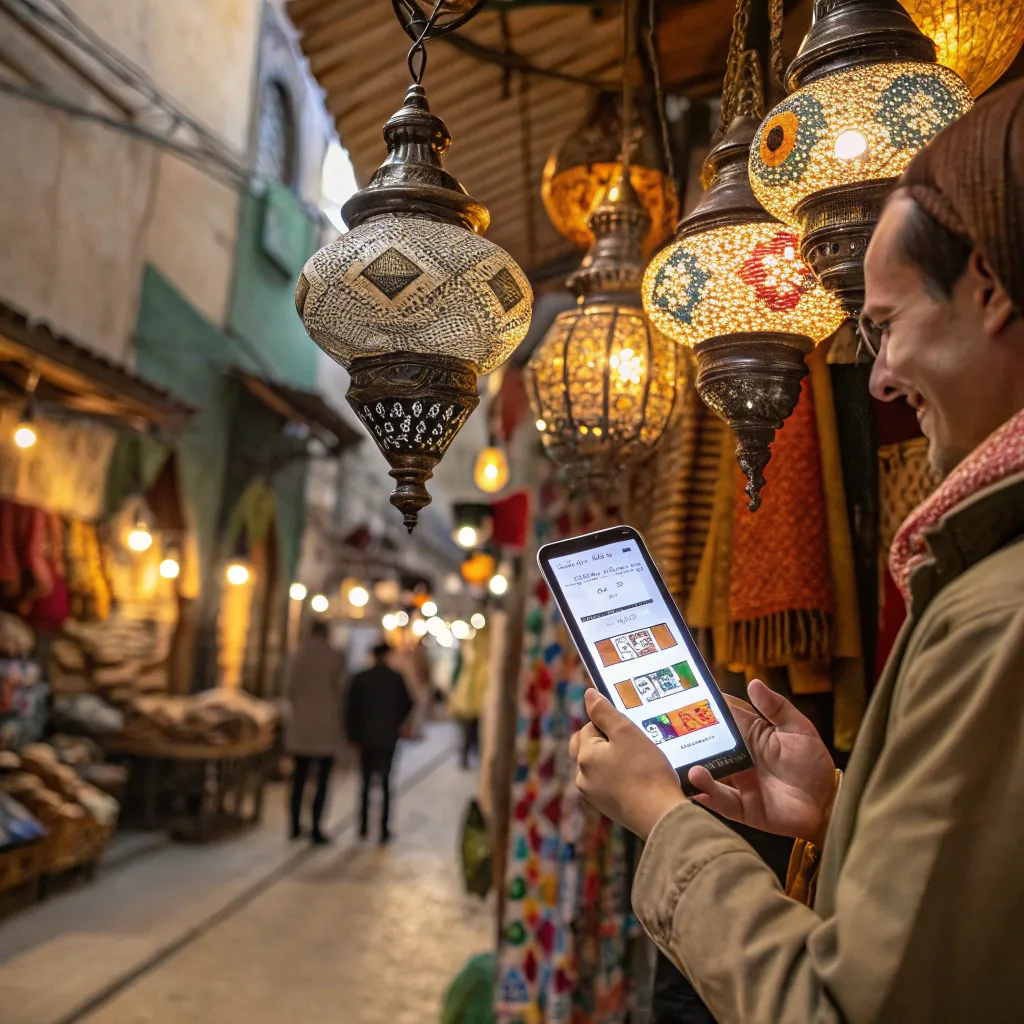
Beyond the Souvenirs: Discovering the Soul of Morocco Through its Arts and Crafts
Imagine: the rhythmic click of a loom weaving intricate Berber patterns, the delicate tap of a chisel shaping ornate cedarwood carvings, the vibrant colors of zellij mosaics shimmering in the sunlight. Moroccan arts and crafts are more than just objects; they're expressions of a rich cultural heritage, a testament to the skill and creativity of generations of artisans.
This guide is your invitation to a journey through Morocco's artistic soul. We'll unveil the traditional crafts that define the country's artistic landscape, from the iconic zellige tilework to the vibrant textiles of the Berber tribes. We'll guide you to the workshops and souks where you can witness these crafts come to life, meet the artisans who pour their hearts and souls into their creations, and discover unique treasures to bring a piece of Morocco home with you. And because we know you'll want to share the beauty of Moroccan artistry with the world, we'll show you how staying connected with an eSIM can enhance your artistic explorations. Get ready to be inspired!
1. Zellige: The Art of Mosaic Storytelling
Zellige, the art of mosaic tilework, is a hallmark of Moroccan architecture and design. These intricate geometric patterns, created from hand-cut ceramic tiles, adorn mosques, palaces, riads, and even public fountains, transforming everyday spaces into works of art.
- Where to Witness Zellige's Splendor:
- Jardin Majorelle (Marrakech): Admire the stunning blue and yellow zellige fountains and walls that define this iconic garden.
- Ben Youssef Madrasa (Marrakech): Step back in time and marvel at the intricate zellige tilework that adorns this historic Islamic school.
- Pro Tip: Use your eSIM to locate zellige workshops and learn more about the process of creating these mesmerizing mosaics. Witnessing the artisans at work is a truly captivating experience.
- Connectivity Tip: Cafes near these popular attractions often offer free Wi-Fi, allowing you to share your photos and connect with fellow art enthusiasts.
2. Carpets and Weaving: Threads of Culture and Tradition
Handwoven rugs and carpets are among Morocco's most treasured crafts, each piece a testament to the skill and artistry of the Berber people. The intricate patterns, vibrant colors, and traditional techniques tell stories of nomadic life, ancient symbols, and the enduring legacy of Berber craftsmanship.
- Regional Styles:
- Berber Rugs: Known for their bold colors and abstract geometric patterns, Berber rugs originate from the Atlas Mountains and reflect the unique artistic traditions of each tribe.
- Boucherouite Rugs: These vibrant and eclectic rugs, made from recycled fabric scraps, offer a modern twist on traditional Berber weaving and embody the spirit of resourcefulness and creativity.
- Where to Find Your Perfect Rug:
- Women's Cooperatives: Support local communities and empower women by purchasing rugs directly from cooperatives.
- Souks: Immerse yourself in the bustling atmosphere of the souks and haggle for a unique, handcrafted carpet.
- Connectivity Tip: Use your eSIM or find a cafe with free Wi-Fi to research different rug styles, compare prices, and learn about the history and significance of Berber weaving.
3. Pottery and Ceramics: Shaping Beauty from Earth and Fire
Moroccan pottery, with its bold colors, traditional motifs, and functional beauty, is a testament to the country's rich artistic heritage.
- Centers of Ceramic Excellence:
- Fes: Considered the pottery capital of Morocco, Fes is renowned for its exquisite blue and white ceramics.
- Safi: Discover the distinctive green and white glazed pottery that defines Safi's ceramic tradition.
- Must-See Pieces:
- Tagines: These iconic earthenware pots, used for cooking traditional Moroccan stews, are available in both decorative and functional styles.
- Plates, Bowls, and Tiles: Bring a touch of Moroccan artistry to your home with beautifully crafted ceramics adorned with traditional motifs.
- Connectivity Tip: Use translation apps on your eSIM to communicate with artisans, learn about the pottery-making process, and negotiate prices.
4. Leatherwork: A Timeless Craft Passed Down Through Generations
The ancient tanneries of Fes and Marrakech offer a fascinating glimpse into the time-honored tradition of Moroccan leatherwork.
- Leather Treasures:
- Bags, Poufs, Belts, and Wallets: Discover high-quality, handcrafted leather goods that will last a lifetime.
- Babouches (Traditional Slippers): These comfortable and stylish slippers make a perfect souvenir.
- Where to Witness the Craft:
- Chouara Tannery (Fes): Experience the sights (and smells!) of a traditional tannery and witness the process of leather dyeing and treatment.
- Marrakech Medina: Explore the many leather workshops and stalls in the bustling souks.
- Connectivity Tip: Use your eSIM to locate tanneries, read reviews, and find nearby cafes with free Wi-Fi.
5. Metalwork and Lanterns: Illuminating Moroccan Artistry
Moroccan metalwork, from intricately carved trays and mirrors to ornate lanterns, showcases the skill and creativity of the country's artisans.
- Where to Find Metalwork Masterpieces:
- Marrakech Souk: Discover a dazzling array of lanterns, brassware, and other metalwork treasures.
- Rabat Kasbah: This historic kasbah is known for its high-quality metal crafts.
- Pro Tip: Use your eSIM to research different styles of metalwork, compare prices, and find information about shipping larger items back home.
6. Wood Carving: The Art of Shaping Cedarwood into Beauty
Wood carving, a cherished tradition in Morocco, particularly in Fes, transforms cedarwood into intricate works of art.
- Where to Admire Wood Carving:
- Dar Batha Museum (Fes): This museum showcases exquisite examples of carved woodwork, including furniture, doors, and decorative screens.
- Artisan Workshops: Visit local workshops and riads to witness artisans at work and discover unique, handcrafted pieces.
- Connectivity Tip: Use your eSIM or find a nearby cafe with free Wi-Fi to research different wood carving styles and techniques.
7. Henna Art: A Temporary Tattoo with Cultural Significance
Henna art, a traditional form of body decoration, is often used in celebrations and ceremonies, adding a touch of beauty and symbolism to special occasions.
- Where to Experience Henna:
- Djemaa el-Fna (Marrakech): Find skilled henna artists in this bustling square, offering intricate designs and traditional patterns.
- Local Markets: Discover henna artists in local markets and souks throughout Morocco.
- Pro Tip: Use your eSIM and a translation app to learn about the symbolism and meaning behind different henna designs before getting one yourself.
8. eSIM: Your Artistic Companion: Connect, Discover, and Share
Your eSIM is an invaluable tool for exploring the world of Moroccan arts and crafts.
- Research and Discover: Learn about different craft traditions, find artisan workshops, and plan your artistic explorations.
- Shop Smart: Compare prices, read reviews, and find the best deals on unique souvenirs.
- Share the Beauty: Instantly share photos of your favorite finds and connect with fellow art enthusiasts online.
9. Experiencing Moroccan Arts and Crafts: Tips for Respectful Engagement
- Support Local Artisans: Visit cooperatives and artisan workshops to directly support local communities and fair trade practices.
- Engage and Learn: Ask artisans about their craft, their techniques, and their inspirations.
- Respectful Photography: Always ask permission before taking photos of artisans or their work, especially in private workshops or homes.
10. Free Wi-Fi Near Artisan Hubs: Staying Connected Offline
- Starbucks: Reliable free Wi-Fi in major cities.
- Local Cafés: Many cafes near artisan workshops and souks offer free Wi-Fi.
- Riads and Guesthouses: Check if your accommodation offers complimentary Wi-Fi.
11. Capturing the Artistry: Photography Tips for Moroccan Crafts
- Intricate Details: Focus on the fine details of zellige tilework, wood carvings, and other handcrafted items.
- Artisan Portraits: Capture the passion and skill of Moroccan artisans at work.
- Market Scenes: Photograph the vibrant colors and textures of the souks and artisan workshops.
- Sharing Tip: Use your eSIM to instantly share your photos and videos, showcasing the beauty and artistry of Moroccan crafts.
Conclusion: Bringing the Artistry Home: A Piece of Morocco's Soul
Moroccan arts and crafts are more than just souvenirs; they're a tangible connection to the country's rich cultural heritage, each piece a testament to the skill, creativity, and passion of Moroccan artisans. By exploring the souks, visiting workshops, and engaging with local artists, you'll not only discover unique treasures but also gain a deeper appreciation for the timeless artistry that defines Morocco's soul. And with the help of your eSIM and readily available free Wi-Fi, you can share the beauty of your discoveries with the world, keeping the spirit of Moroccan craftsmanship alive.
Last Articles
Simless
March 17, 2025
Simless
March 16, 2025
Simless
March 15, 2025
Simless
March 14, 2025
Simless
March 14, 2025
Simless
March 13, 2025
Simless
March 7, 2025



